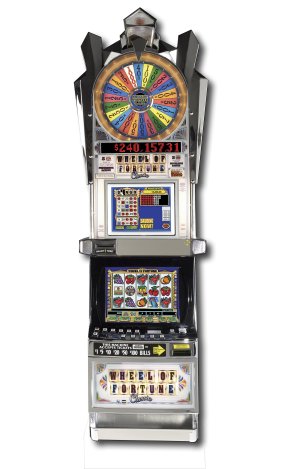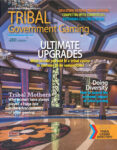
When the NIGC opened its office on the morning of March 10, 2008, it surely found its fax machine inundated by comments filed in response to the four proposed rules to govern Class II gaming. The comment period had ended at midnight the night before. Hundreds of letters were filed in the final few days, ending a long, strange year in which the NIGC solicited unprecedented input into its regulatory process.
The Bright Line
In the spring and summer of 2006, the NIGC proposed two sets of rules. The first would set up classification standards for Class II games, and also redefine an “electronic or electromechanical facsimile of a game of chance,” which the Indian Gaming Regulatory Act excludes from Class II gaming. The second proposal created a set of technical standards for Class II games: the detailed specifications imposed on manufacturers seeking approval on matters of game integrity and security.
The response to both proposals was overwhelmingly negative. When the commission’s own economic impact analysis revealed that the promulgation of those rules would devastate the existing Class II market, the commission, to its credit, paused in its process.
Somewhat later, after a series of work sessions with industry experts had convinced the commission that its own technical standards proposal was dramatically unsuited to the technological realities of Class II gaming systems, the commission paused further. It withdrew the proposed rules and began to listen some more. For more than a year, it had a lot to listen to.
Working Together
December 2006 marked the formation of what became known as the Tribal Gaming Working Group (TGWG), an informal collection of tribal leaders, tribal gaming operators and regulators, businessmen and engineers with expertise in Class II gaming development, and lawyers representing all those interests. The TGWG formed to deliver additional assistance to the Tribal Advisory Committees charged with providing expertise to the NIGC in the formulation of Class II rules.
Through a series of intense meetings held throughout the country, interspersed with conference calls that ran for hours, the TGWG deconstructed the NIGC technical standards. It exposed the original proposal as resting on the mistaken assumption that Class II gaming systems should be measured by technical requirements appropriate to stand-alone slot machines. The TGWG advocated that the technical standards be restructured to reflect, instead, a system in which central generation of numbers in a bingo game is transmitted to a collection of player interfaces, enabling players to play against each other in a common game. This approach preserves the structure of bingo for any medium of play, whether manual ball draw and paper cards or electronic designation of bingo balls displayed on players’ electronic screens.
TGWG work continued with the knowledge and occasional involvement of NIGC staff, with eventual dialogue in which NIGC staff, the Technical Standards Tribal Advisory Committee (TTAC) and members of the TGWG discussed, attacked and defended proposed revisions to the technical standards developed by the TGWG.
Nearing the end of the process, the NIGC continued to make changes that the Advisory Committee and TGWG asserted would undermine the purpose and efficacy of the technical standards. But a revolution has certainly taken place, in that the NIGC, in its most recent proposal on October 24, 2007, now proposes to regulate Class II gaming systems, and not some renamed slot machine.
At a Minimum
A similar process addressed Class II Minimum Internal Control Standards (MICS). For some years, the NIGC has required that tribal gaming operations adhere to the Minimum Internal Control Standards set forth at 25 C.F.R. Part 542. Tribes have successfully challenged the commission’s authority to impose such standards on Class III gaming. The remaining provisions, purporting to regulate Class II, were woefully inadequate, and the NIGC determined to develop a new Part 543 to address Class II alone. It reconstituted a MICS Tribal Advisory Committee (MTAC), and eventually agreed to subject its own proposed new MICS to the scrutiny, comment and suggestions of the still active TGWG.
Over a period of several months, the MTAC and TGWG worked with NIGC staff to reorganize the MICS to reflect the play of the game of bingo, with the goal of enabling tribal gaming regulators to monitor the play of each of elements of the game, tracking the criteria of bingo as set forth in the IGRA. Like the technical standards, the revised MICS aimed to provide satisfactory controls for the play of bingo whether or not technologic aids were used.
Throughout this productive and extraordinarily cooperative effort, proposed changes to the classification standards were nowhere to be seen, and were not available for discussion. The NIGC broadly indicated that it had had enough input from prior discussions, and was eager to complete the task of establishing a “bright line” between Class II and Class III gaming. Those who had been laboring to establish that same bright line between such forms of gaming through carefully crafted MICS and technical standards were disappointed that the NIGC declined to consider that work sufficient, or at least to avail itself of the assembled expertise of all facets of the Class II industry.
Technological Aids
On October 24, 2007, the NIGC published its set of four new Class II definitions, in the Federal Register. Public outcry was immediate and intense. A principal objection was (and is) that the NIGC’s proposed classification standards departed from the statutory bingo criteria, the same criteria held be courts to be the “sole criteria for bingo,” created new and arbitrary requirements for the play of the game of bingo only if that game is played through technologic aids. Even though the IGRA expressly authorizes the play of Class II games with equal force “whether or not technologic aids are used,” the regulatory scheme would impose significant restrictions on game play for all forms of the game not using paper.
But the NIGC went even further. Not content that its artificially restricted bingo game would be significantly distinct from a Class III game (and significantly degraded in economic viability, according to the NIGC’s own new economic impact study), the commission undertook to redefine the facsimile definition presently in force. Adopted in 2002, and approved by reviewing courts, the existing definition tracks the language in the Senate Report accompanying IGRA, requiring that a permissible technologic aid be “readily distinguishable from the use of electronic facsimiles in which a single participant plays a game with or against a machine rather than with or against other players.”
The proposed new definition eliminates the distinguishing limitation that precluded play against a machine. Instead, the NIGC would establish, essentially, that all games played exclusively with electronic aids are facsimiles. It then purports to establish a safe harbor for any that achieve compliance with the classification standards, which are applicable to all games played solely through electronic aids. But that effort may not work.
The IGRA categorically excludes facsimiles from Class II gaming. If the NIGC determines that all solely electronic games are Class III facsimiles, then it may not have the ability to bring such games back into the realm of Class II merely by determining acceptable standards for such facsimiles. Class III gaming is outside the NIGC’s regulatory scope of authority. While it may seek to determine where the bright line exists between Class II and Class III gaming, it lacks governmental power once it crosses that line. Many fear that the facsimile definition alone may be enough to wipe out the now vibrant industry of Class II electronic bingo. At the very least, the facsimile definition is merely a surplus requirement to comply with the classification standards.
Hey Grandfather
The NIGC stumbles into yet another paradox. Recognizing that the classification standards would render nearly all existing games obsolete, the NIGC proposes a “grandfather” provision that would delay application of the new standards to existing games for a period of five years. Many object that even such a five-year term would improperly truncate the useful life of a Class II gaming system. But many more are concerned that the NIGC’s own language could render the grandfather provision wholly meaningless. The rule itself states:
“Nothing in this part is intended to authorize the continued operation of uncompacted Class III machines that allow a player to play against the machine.”
Given that games not compliant with the classification standards, are, by the NIGC’s terms, uncompacted Class III machines, this sentence could make it impossible to rely on or apply the grandfather clause.
The details of the proposed classifications standards are not significantly different from the version proposed in May 2006. To its credit, the NIGC eliminated some of the requirements whose goal was patently to delay and extend the duration of game play.
But many other restrictions remain. The initiation of each game is delayed by two seconds, except in the most heavily populated gaming facilities. Players are required to interact with the game at least twice, and often (and unpredictably) more times, according to the NIGC’s additional rule requiring that slept bingos trigger additional ball releases and extended play for others in a game. All games must have an overly precise label (“This is a game of bingo”) that seems too simple to offer much in the way of education to a player.
Bingo game rules created by the NIGC pose significant threat to future options for game development, which may require more flexibility in the configuration of a bingo card than the NIGC permits. This is yet another arbitrary distinction not found in the many jurisdictions in which paper bingo and other electronic bingo have flourished. Games similar to bingo are defined out of existence. The play of Bonanza bingo is forbidden in electronic form (even though it remains permissible in paper play).
Compliance issues are unclear for bingo minders, or for future development of other compact, handheld play, thus handicapping an obvious avenue for new technology. But only for tribal play, because the rest of the electronic bingo industry will continue to develop, leaving tribal Class II play fossilized and unprofitable.
Other Concerns
The myriad comments raise other serious questions.
The NIGC’s economic impact study suggests that the effect on Class II gaming operations would be immense, with billions of dollars of quantifiable losses. The study itself cannot measure the economic harm imposed by depriving tribes of leverage to negotiate new compacts, or to seek less restrictive compact amendments.
Nor can mere dollar figures adequately represent the catastrophic harm incurred when a small tribal facility, one whose revenues primarily support job creation, can no longer keep its doors open because the Class II games can no longer compete with nearby Class III-type games in a recalcitrant state that refuses to compact. While the NIGC has announced its intention to commission a cost/benefit study, that study has not been completed. Many wonder how the NIGC will attempt to justify benefits sufficient for the adverse regulatory costs.
Finally, the process of the NIGC’s rulemaking, and its substance, pose substantial threats to tribal sovereignty. The NIGC’s rule threatens to eviscerate Class II gaming, the one form of tribal gaming that the states cannot control. Tribes seeking to conduct gaming will, as a practical matter, be at the mercy of states that cannot be compelled to compact in good faith, and which will demand more concessions of revenue and regulatory control. Moreover, the proposed regulatory structure substantially transfers tribal regulatory power to classify games to private laboratories, whose “certification” of games as Class II would occupy the place of a primary (non-governmental) regulator. Tribes are prohibited from using their own laboratories to conduct such certification.
And lastly, the process itself illuminates the defect in the NIGC’s own consultation efforts. While the NIGC discussed some aspects of rule development with its tribal advisory committees, it did not engage in broader, meaningful consultation with tribal governments that may not have had representation on the committees. And while the NIGC did benefit from the significant expertise of the TGWG, that group did not function in the role of government consultation, and its advice was roundly rejected on all matters critical to classification determinations.
If the NIGC is to protect the critical asset that is Class II gaming, it should avail itself of all the information necessary to make good decisions. In particular, it must both seek and apply all available technical and governmental expertise to all facets of Class II rulemaking.
Now that the comment period has ended, the NIGC must fulfill its obligation to consider how the comments affect its determination to go forward with the proposed regulations. Chairman Phil Hogen has frequently commented that the commission is not unalterably committed to all the rules. If the shortcomings in the MICS and technical standards can be addressed, then those rules can provide useful tools for tribal regulation of Class II gaming.
Undoubtedly, the classification standards and facsimile definition, if adopted, will give rise to significant litigation. Even if tribes do not file immediate challenges, the defects will likely encourage the United States Department of Justice to resume its own enforcement proceedings against games the NIGC has newly determined to be uncompacted Class III games. The proposed rules threaten a new era of legal uncertainty, unnecessarily raising the cost of doing business in Class II.















